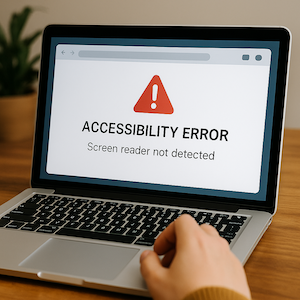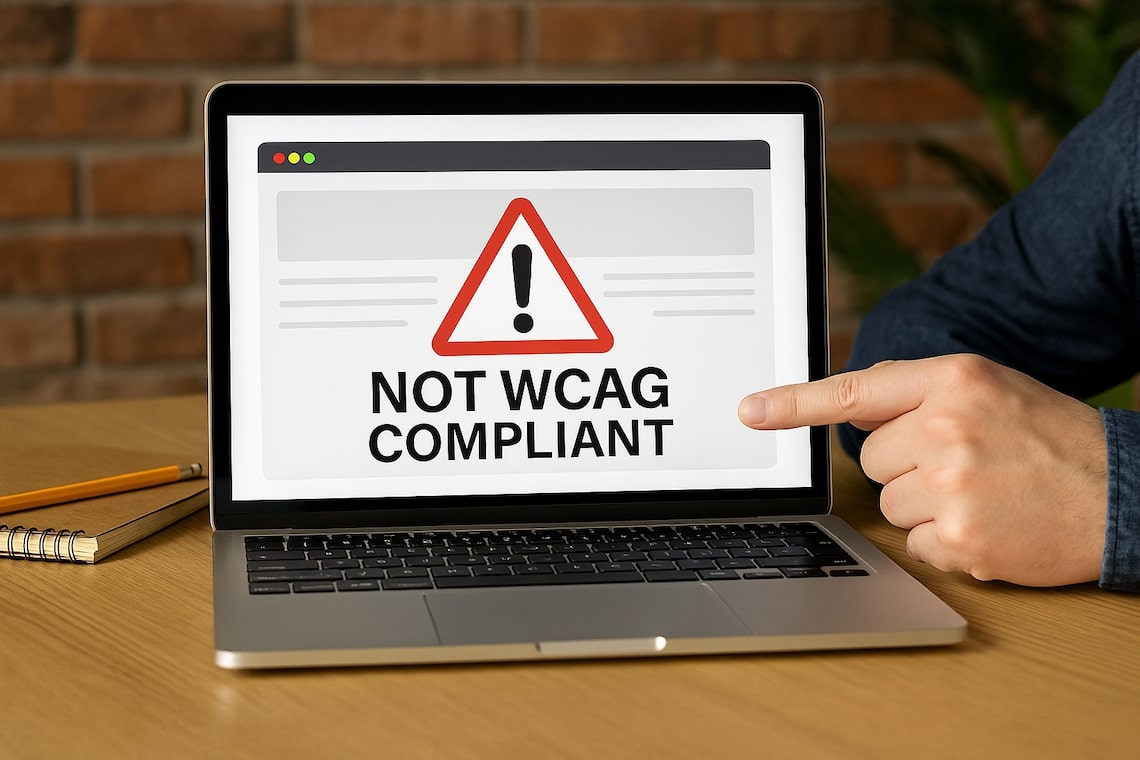Accessibility is no longer just a buzzword—it’s a legal and ethical imperative. But how can you tell if your website is truly accessible? Many sites unknowingly exclude users with disabilities due to hidden barriers in design or code.
Here are five common red flags that your website may not meet WCAG 2.2 standards—and what you can do to fix them today.
1. Missing Alt Text on Images
Alt text (alternative text) is a description added to an image in HTML that screen readers use to explain visuals to visually impaired users. Without it, your images become meaningless blocks of space to anyone relying on assistive tech.
Fix it: To comply with WCAG 2.2 standards, use descriptive, concise alt text for all functional and informative images. Reguweb’s scanner flags all missing or inadequate alt tags, giving you an actionable list to correct.
2. Poor Color Contrast
Low contrast between text and background makes content hard to read, especially for users with low vision or color blindness. WCAG requires a contrast ratio of at least 4.5:1 for body text.
Fix it: Choose accessible color palettes and test contrast using tools like Reguweb’s automated scanner. The platform highlights text elements that fall short and recommends compliant alternatives.

3. No Keyboard Navigation
Users with motor disabilities or those who use screen readers often navigate using only a keyboard. If they can’t tab through your site in a logical order—or if interactive elements can’t be accessed via keyboard—your site isn’t compliant.
Fix it: Based on WCAG 2.2 standards, you should test your site using only a keyboard. If you can’t access menus, buttons, or forms, it’s time for a redesign. Reguweb’s audits identify where keyboard traps and inaccessible elements exist.
4. Unlabeled or Inaccessible Forms
Forms without labels, proper focus indicators, or accessible error messages confuse users and prevent them from submitting information, violating multiple WCAG guidelines.
Fix it: Add labels and ARIA attributes to every field, and ensure error messages are screen reader-friendly. Reguweb identifies problematic form elements and provides remediation guidance.
5. No Accessible Video or Audio Content
Videos without captions or audio content without transcripts exclude users who are deaf or hard of hearing. This is one of the most easily avoided accessibility mistakes.
Fix it: Provide synchronized captions for video and text transcripts for all audio content. Reguweb’s manual audit service checks media content for compliance and helps you implement fixes.
How Reguweb Makes It Easy to Get Compliant
Reguweb is built to simplify compliance for all types of businesses. Whether you’re a solo entrepreneur, agency, or large organization, our tools and services help you fix accessibility issues fast:
- Automated Scans: Identify WCAG 2.2 violations in seconds.
- Clear Reporting: Know exactly what needs attention with visual, categorized reports.
- Accessibility Widget: Give users real-time control over their experience.
- Manual Audits: For advanced checks and human oversight.
- Ongoing Monitoring: Daily scans to catch new issues as your site evolves.
Plus, you can start with a 14-day free trial—no commitment, no credit card.
Final Thoughts: Don’t Wait Until It’s Too Late
Accessibility isn’t just about avoiding lawsuits—it’s about creating a better, more inclusive experience for everyone who visits your website.
If your site has any of these 5 issues, it’s time to take action. With Reguweb, getting compliant is fast, affordable, and user-friendly. Scan your website now at Reguweb.com and start removing accessibility barriers today.
